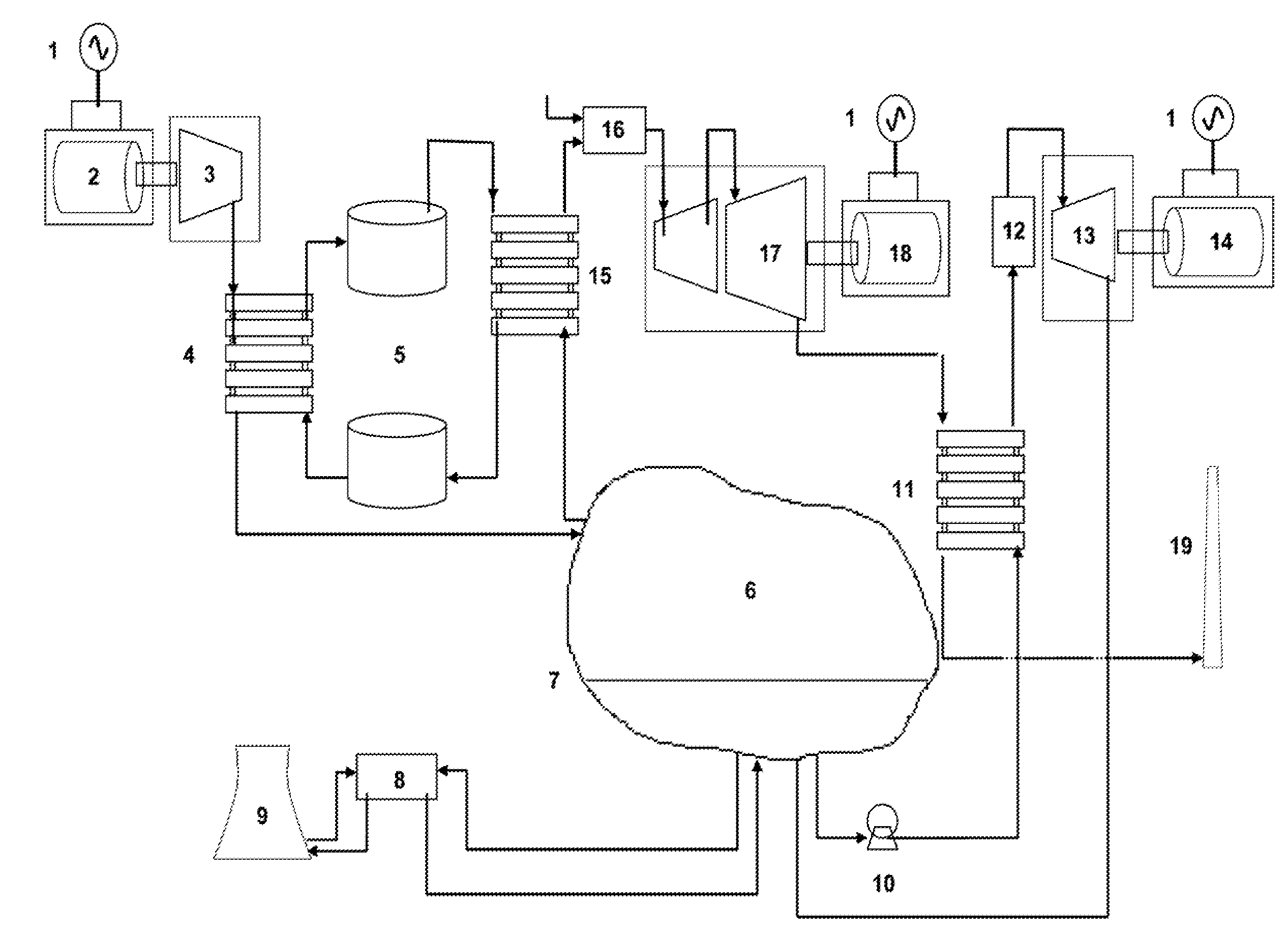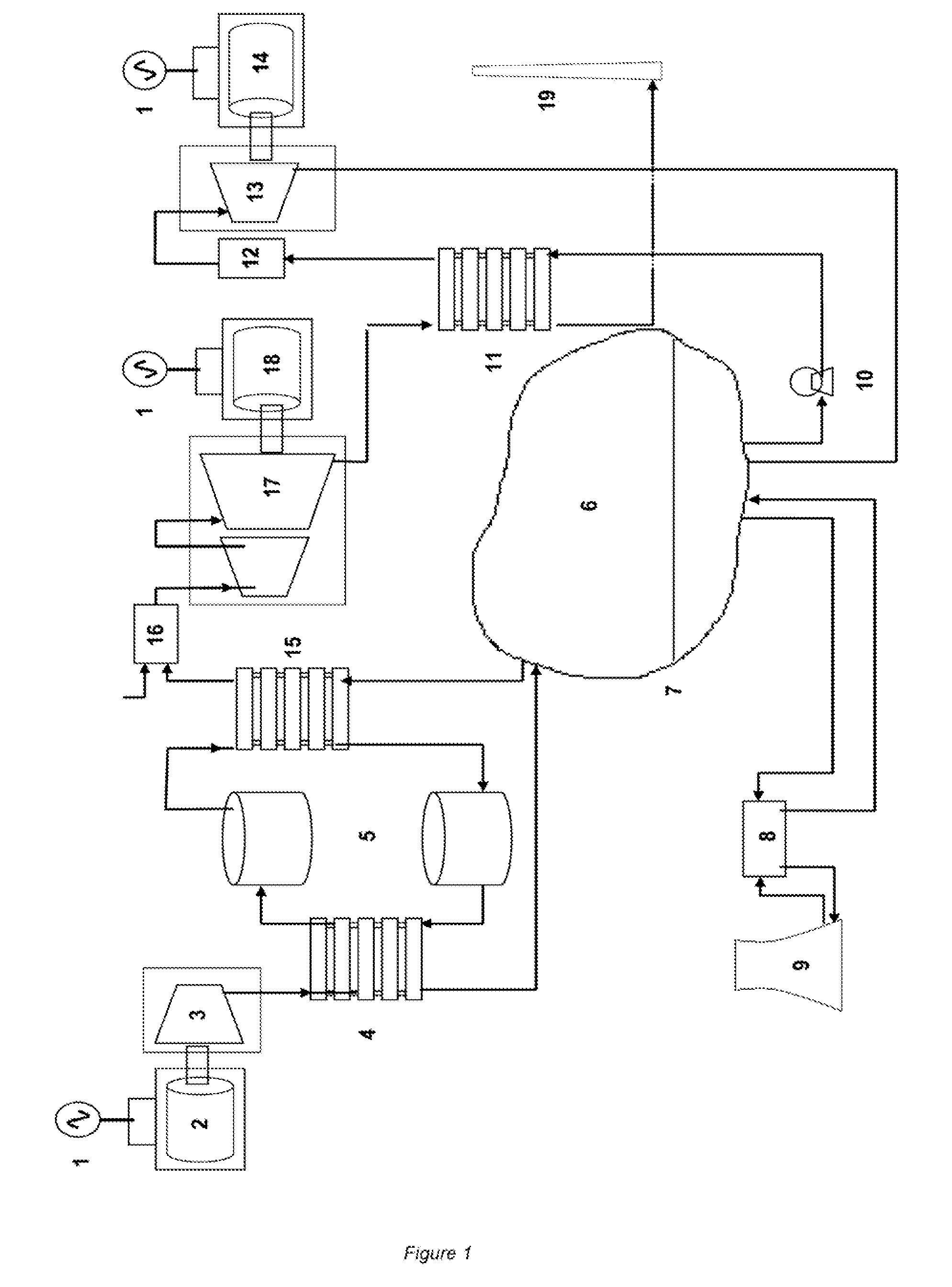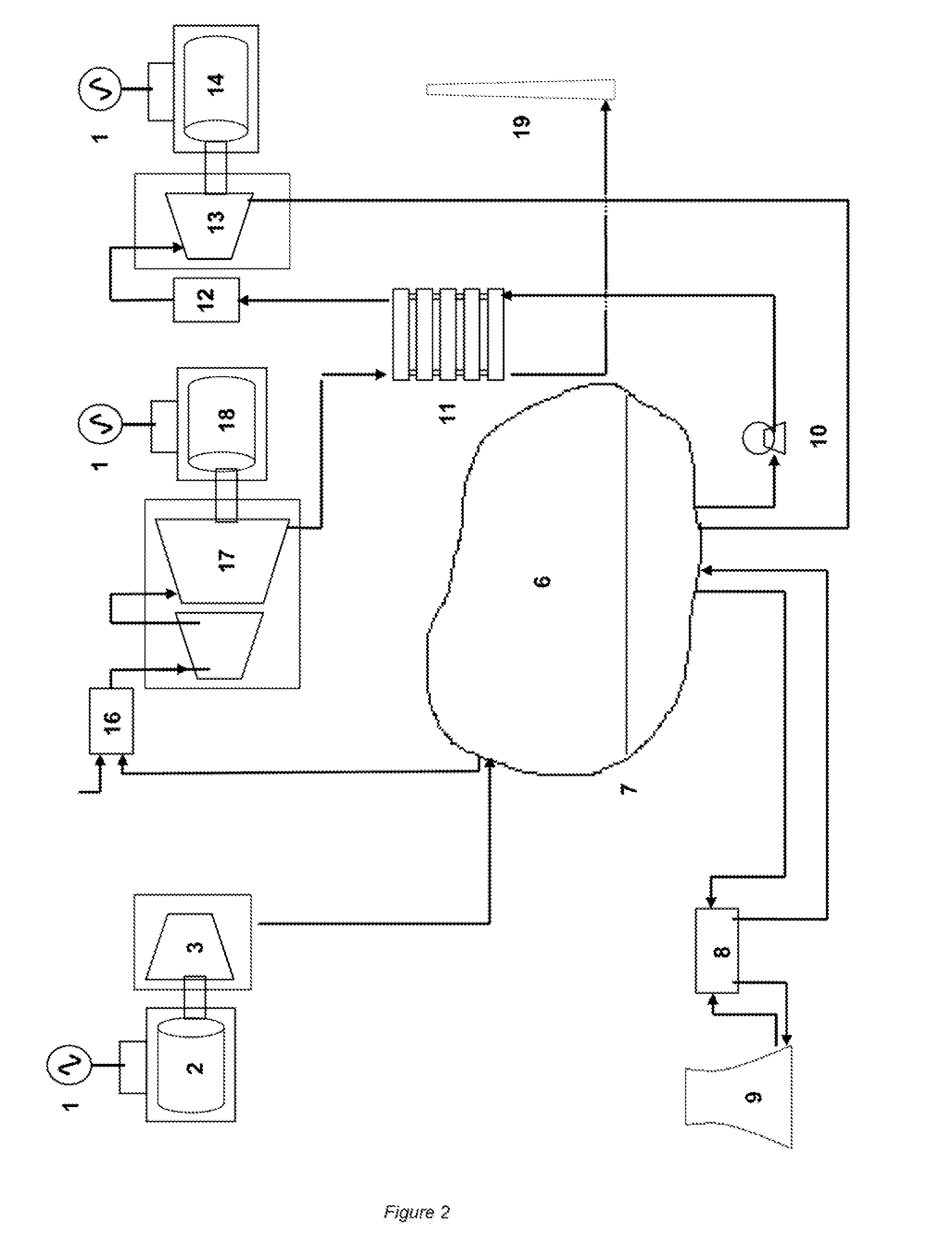Combined Cycle CAES Technology (CCC)
a combined cycle and caes technology, applied in the direction of steam engine plants, machines/engines, mechanical equipment, etc., can solve the problems of low operation feasibility, inability to use, and low efficiency that can be achieved
- Summary
- Abstract
- Description
- Claims
- Application Information
AI Technical Summary
Benefits of technology
Problems solved by technology
Method used
Image
Examples
Embodiment Construction
[0007]The solution to these problems is to combine the thermodynamic cycle followed by the atmospheric air (Brayton cycle) with another thermodynamic cycle followed by an auxiliary fluid, that is confined in the same cavern within a membrane, in which thermodynamic cycle the auxiliary fluid suffer volume variations, so allowing the entry and exit of compressed atmospheric air into and out of the cavern.
[0008]There are many feasible cycles that could be followed by the auxiliary fluid and that involve a substantial change in its volume. For example, it could follow two sections of a Rankine cycle, one during the air compression and entry into the cavern process and the other during the air outlet and turbininig process, such that:[0009]initial and final states of each section are at he same pressure[0010]the initial state of the air compression and entry into the cavern process matches the final state of the air outlet and turbining process, and it is a state of very low density, ie,...
PUM
 Login to View More
Login to View More Abstract
Description
Claims
Application Information
 Login to View More
Login to View More - R&D
- Intellectual Property
- Life Sciences
- Materials
- Tech Scout
- Unparalleled Data Quality
- Higher Quality Content
- 60% Fewer Hallucinations
Browse by: Latest US Patents, China's latest patents, Technical Efficacy Thesaurus, Application Domain, Technology Topic, Popular Technical Reports.
© 2025 PatSnap. All rights reserved.Legal|Privacy policy|Modern Slavery Act Transparency Statement|Sitemap|About US| Contact US: help@patsnap.com



